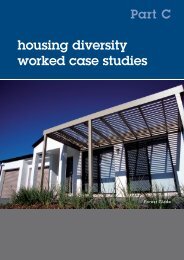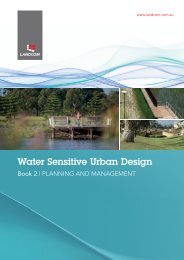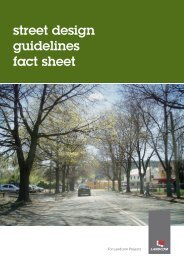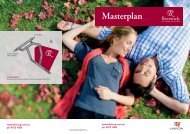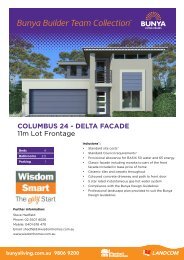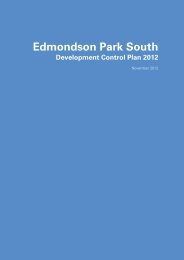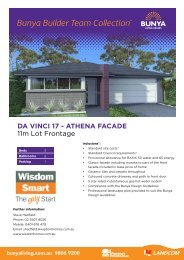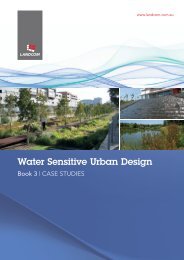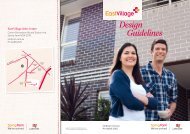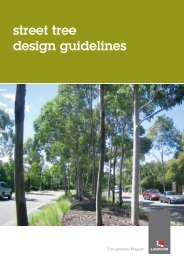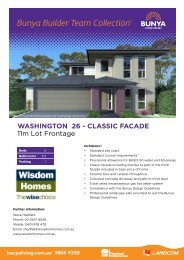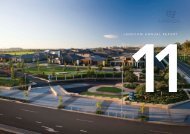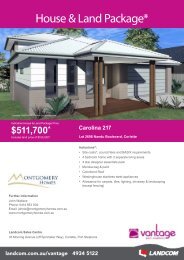SUSTAINABILITY REPORT - Landcom
SUSTAINABILITY REPORT - Landcom
SUSTAINABILITY REPORT - Landcom
You also want an ePaper? Increase the reach of your titles
YUMPU automatically turns print PDFs into web optimized ePapers that Google loves.
JOINT STATEMENT<br />
FROM THE<br />
CHAIRMAN AND MANAGING DIRECTOR<br />
OUR CULTURE<br />
The fact that we strive to integrate our social, environmental<br />
and financial responsibilities provides the real point of difference<br />
between <strong>Landcom</strong> and many developers constrained by purely<br />
commercial motives.<br />
It seems that everyone is talking about sustainability. And rightly so. At <strong>Landcom</strong>, sustainable<br />
development permeates every aspect of our business. We believe a bright future awaits those<br />
organisations that adopt its practices and promote its benefits.<br />
As a government-owned property developer we have a specific responsibility to be, and to be seen<br />
to be, a good corporate citizen and to lead by example. At the same time it is our responsibility<br />
to implement the New South Wales Government’s urban management policies. These imperatives<br />
include quality urban design, sustainable development, social justice, affordable housing and<br />
community development.<br />
A glance at our summary results page for the past year reveals that we have progressed on our start<br />
of two years ago in many areas, yet we still have a lot of work to do. In particular, the impact of our<br />
business on the conservation of native vegetation is proving to be quite a challenge.<br />
There is no denying we have an impact on native vegetation. Our business is urban development and<br />
regardless of all the attention to careful planning, Sydney’s major growth corridors are located in areas<br />
of Cumberland Plain Woodland. This means we must reconcile our growing population’s social needs<br />
for adequate and affordable housing with pressing environmental needs to conserve biodiversity.<br />
CHAIR/MD<br />
We also need to find more effective ways of measuring community<br />
satisfaction with the facilities we provide within our estates, and<br />
with the sustainable practices and products we offer.<br />
The areas where we feel we can “take a bow” include water<br />
management, housing affordability, energy efficiency, recycling<br />
of building materials and conservation of indigenous and<br />
non-indigenous heritage. However, the nature of sustainable<br />
development means the tasks do not get easier with practice.<br />
We don’t claim any special wisdom when it comes to<br />
sustainability. But we are past the talking stage and well into<br />
the practice of making sustainability an integral part of everything<br />
we do.<br />
We decided in 2001 that environmental sustainability, social<br />
responsibility and financial viability cannot be considered in<br />
isolation but are, in fact, interdependent. We soon recognised that<br />
to set sustainability benchmarks for our industry, we had to create<br />
a culture of excellence in sustainable practice and integrate it into<br />
all of our business decision-making processes.<br />
3



